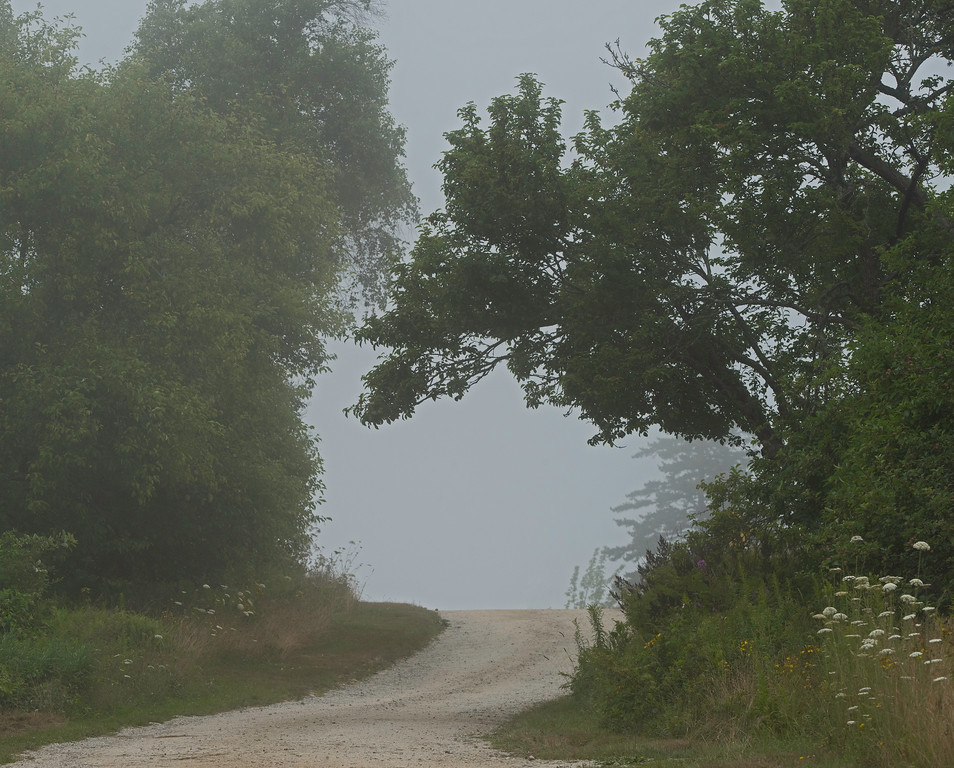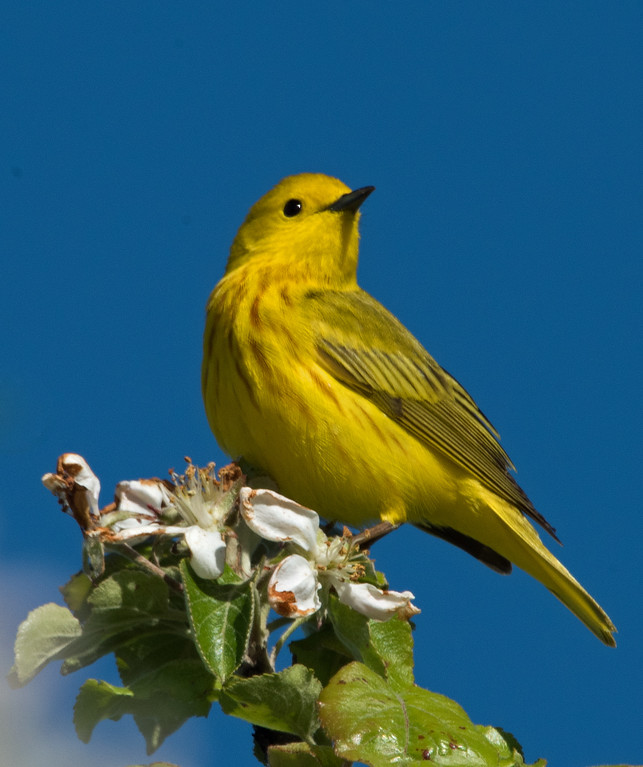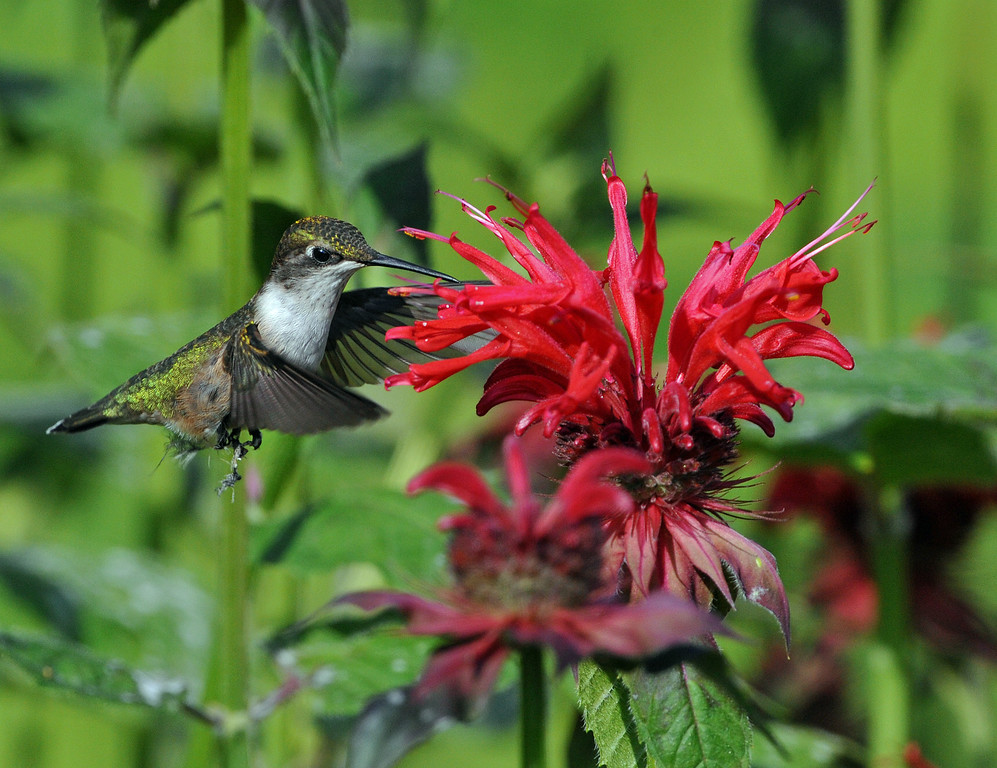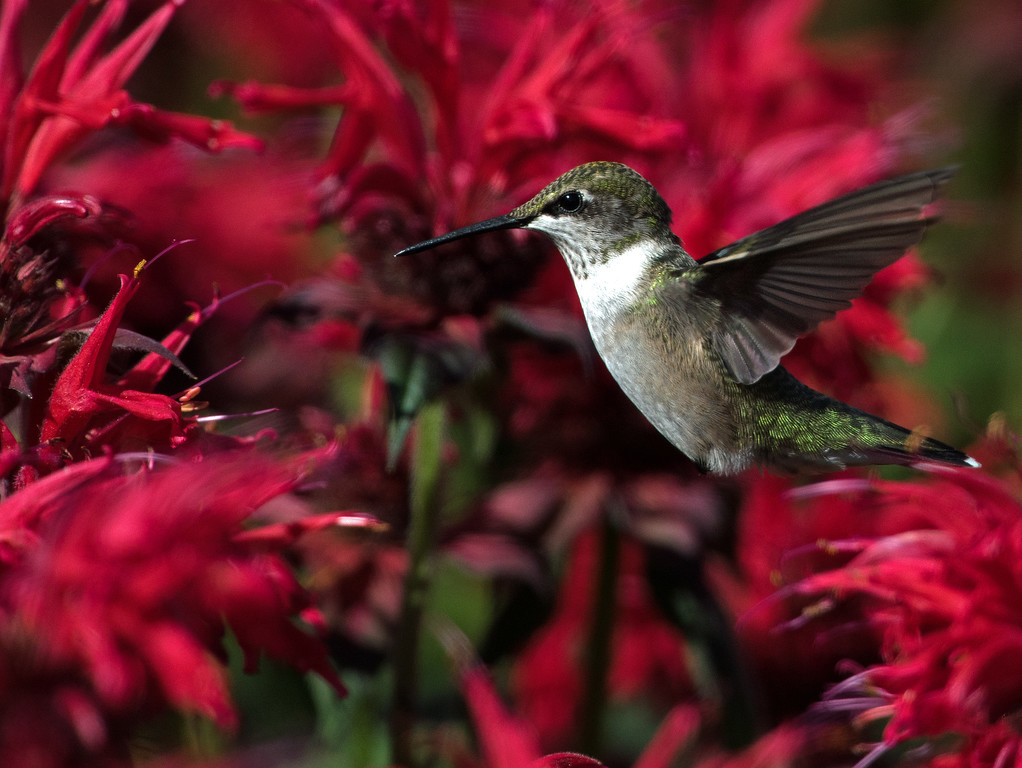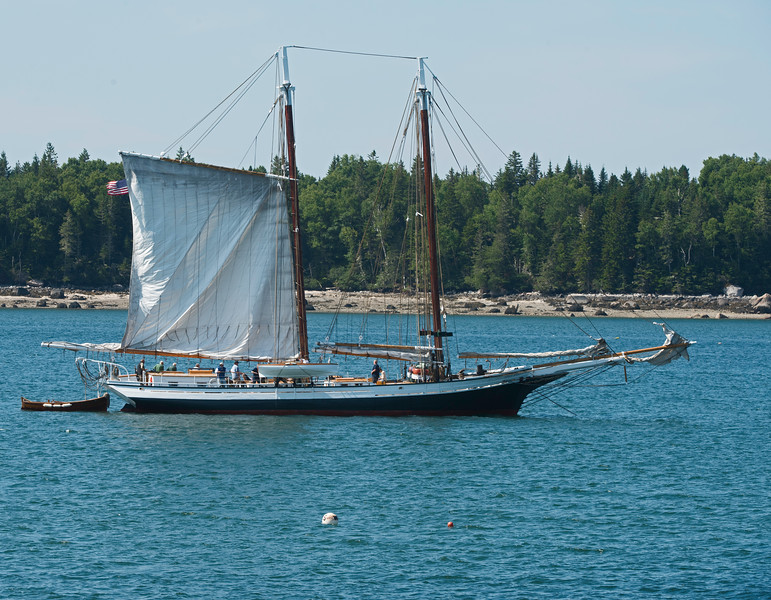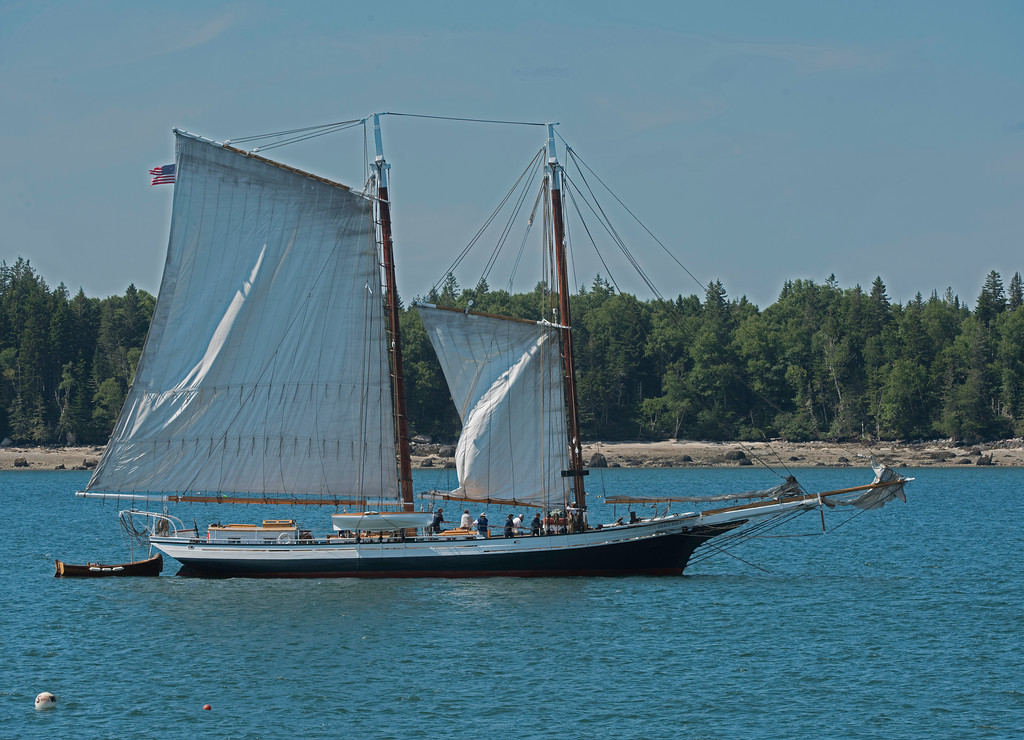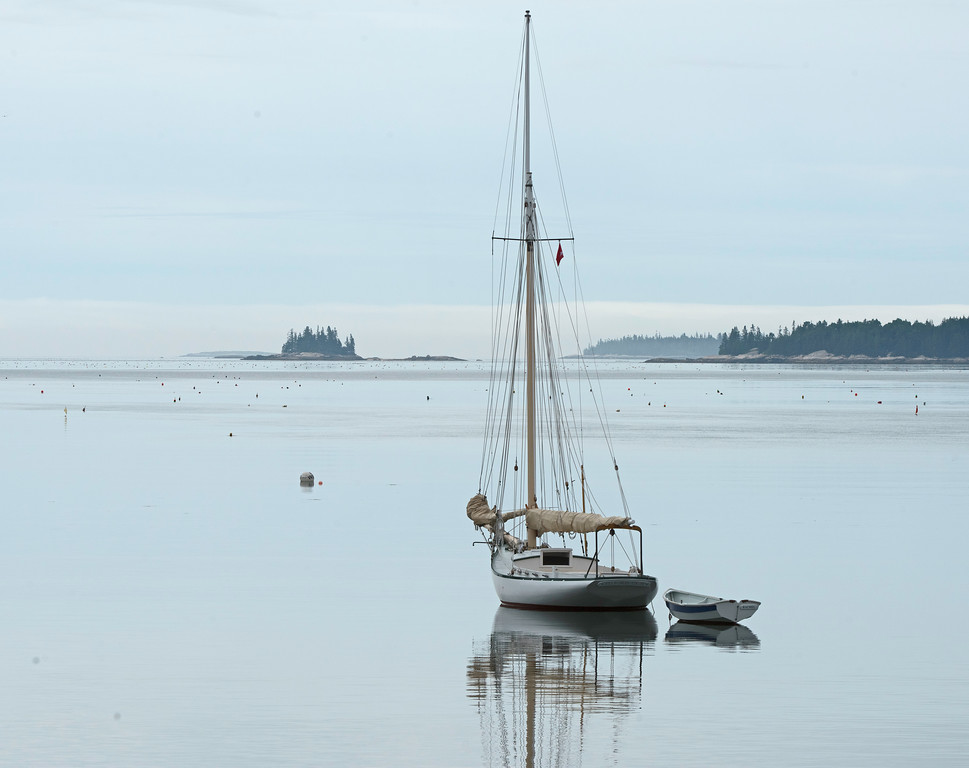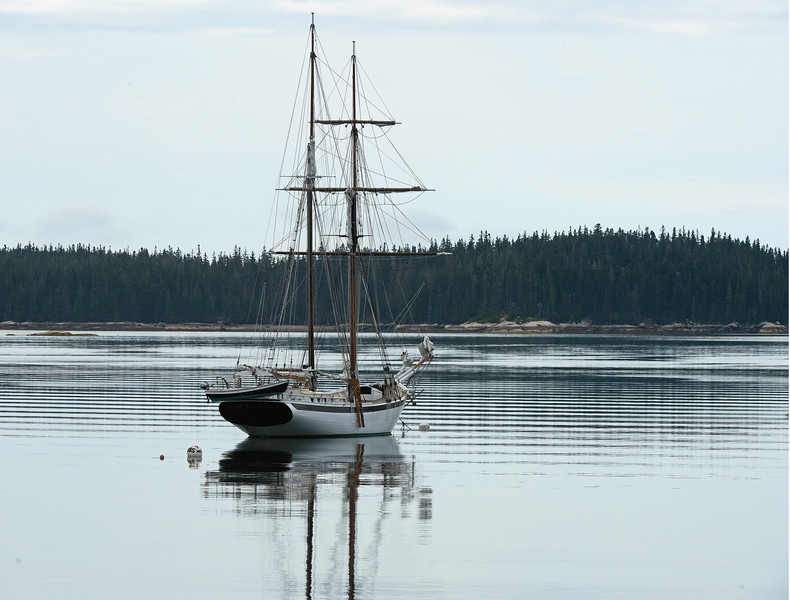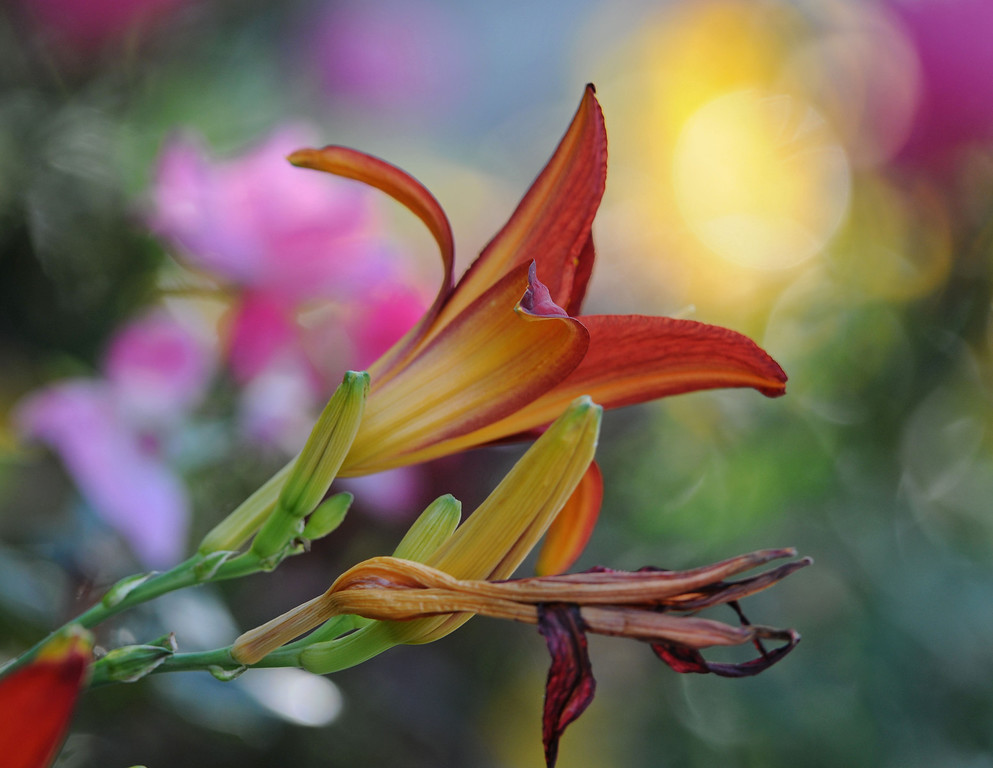Last night the sky over Naskeag Harbor was clear and the moon's glitter path was bright. The moon was a “waning gibbous moon.”
That is, it was waning because it’s in the process of appearing smaller and smaller to us after our July 27 full moon and it was gibbous because it was humped/distorted, showing us less that a full circle, but more than the quarter moon that it soon will be. (Brooklin, Maine)



